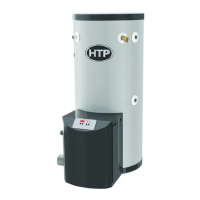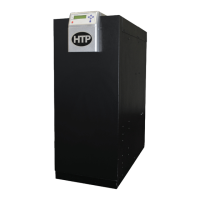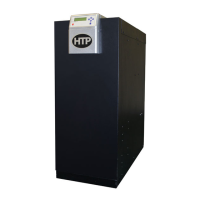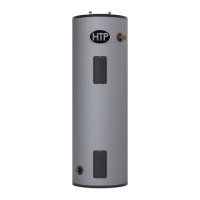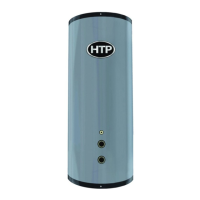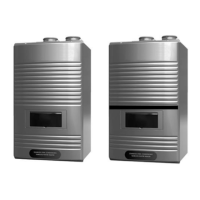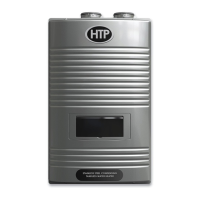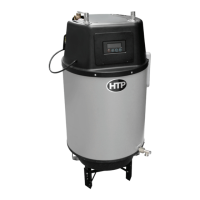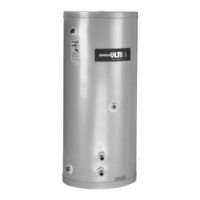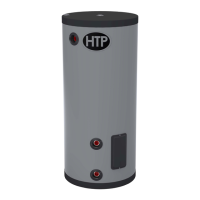LP-179 Rev. 6.7.16
5
NOTE: If the water heater is exposed to the following, do not
operate. Immediately call a qualied service technician.
1. Fire
2. Damage
3. Water
Failure to follow this information could result in property
damage, severe personal injury, or death.
NOTE: Obey all local codes. Obtain all applicable permits
before installing the water heater.
NOTE: Install all system components and piping in such a
manner that does not reduce the performance of any re
rated assembly.
This water heater has been designed to heat potable water
ONLY. Using this water heater to heat non-potable uid WILL
VOID product warranty, and could result in property damage,
personal injury, or death.
Do not use this water heater for anything other than its
intended purpose (as described in this manual). Doing so
could result in property damage and WILL VOID product
warranty.
High heat sources (sources generating heat 100
o
F / 37
o
C or
greater, such as stove pipes, space heaters, etc.) may damage
plastic components of the water heater as well as plastic
vent pipe materials. Such damages ARE NOT covered by
warranty. It is recommended to keep a minimum clearance of
8” from high heat sources. Observe heat source manufacturer
instructions, as well as local, state, provincial, and national
codes, laws, regulations and ordinances when installing this
water heater and related components near high heat sources.
A. Improper Combustion
Do not obstruct the ow of combustion and ventilating air.
Adequate air is necessary for safe operation. Failure to keep
the exhaust vent and combustion air intake clear of ice, snow,
or other debris could result in property damage, serious
personal injury, or death.
B. Gas
Should overheating or gas supply fail to shut o, turn o the
manual gas control valve to the water heater.
C. When Servicing the Water Heating System
To avoid electric shock, disconnect electrical supply before
performing maintenance.
NOTE: When inquiring about service or troubleshooting,
reference the model and serial numbers from the water
heater rating label.
To avoid severe burns, allow water heater and associated
equipment to cool before servicing.
D. Heater Water
Do not use petroleum-based cleaning or sealing compounds in
a water heating system. Gaskets and seals in the system may be
damaged. This can result in substantial property damage.
Do not use “homemade cures” or “patent medicines”. Damage
to the water heater, substantial property damage, and/or
serious personal injury may result.
E. Freeze Protection
NOTE: Consider piping and installation when determining
heater location.
Failure of the water heater due to freeze related damage IS
NOT covered by product warranty.
Be sure to disconnect electrical power before performing
service. Failure to do so could result in electrical shock,
property damage, serious personal injury, or death.
NEVER use any toxic chemical, including automotive, standard
glycol antifreeze, or ethylene glycol made for hydronic (non-
potable) systems. These chemicals can attack gaskets and seals
in water systems, are poisonous if consumed, and can cause
personal injury or death.
UNCRATING THE WATER HEATER - Any claims for damage
or shortage in shipment must be led immediately against the
transportation company by the consignee.
Households with small children, disabled, or elderly persons
may require a 120
o
F or lower temperature setting to prevent
severe personal injury or death due to scalding.
G. Water Temperature Adjustment
If the water heater is going to have a set temperature above
120
o
F, you must use an ASSE 1017 rated mixing valve to avoid
severe burns or death from scalding temperatures.
F. High Elevation Installations
Natural gas at high elevation might contain less heating value
than typical 1,000 BTU/cu ft and therefore can cause improper
air / gas mix leading to improper combustion. For natural gas
installations above 3,000 ft, call your gas provider to determine
the heating value of the supplied natural gas.
Approximate Time / Temperature Relationships in Scalds
120
o
F More than 5 minutes
125
o
F 1 1/2 to 2 minutes
130
o
F About 30 seconds
135
o
F About 10 seconds
140
o
F Less than 5 seconds
145
o
F Less than 3 seconds
150
o
F About 1 1/2 seconds
155
o
F About 1 second
Table 1 - Approximate Time / Temperature Relationships in Scalds
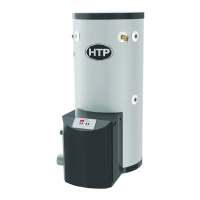
